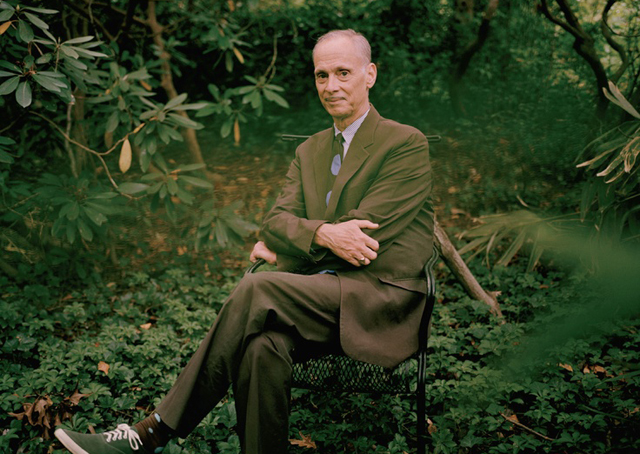
Hollywood has in the last several years come to embrace the significant role that Queer Cinema has had to play in film and the culture at large. But, Queer Cinema is not as easily definable as you’d might expect. It certainly would encompass movies that tackle LGBTQ issues, but it might also be used to classify movies made largely by LGBTQ talent in front and behind the camera. As has been shown, there are movies that tackle Queer themes, but are made by well-meaning heterosexual, cisgender filmmakers. And then there are Queer filmmakers who don’t tackle queer subjects in their movies. And yet, there are valid reasons to identify all these types of movies under the umbrella of Queer Cinema. The label gained prominence under the New Queer Cinema movement of the 80’s and 90’s, which helped to give queer themes and filmmakers more mainstream recognition in Hollywood. While many of the films that tackled queer themes tended to be made outside of the industry, due to still lingering social taboos around the subjects, they would gain an audience in this period that helped to elevate many of them to cult status, and in turn they would help to reshape the industry into what we know today. And there certainly is no other filmmaker that emerged from this movement that looms larger, both literally and figuratively, than John Waters. Waters is undeniably as much of a Queer icon as he is a cinematic icon. But it should be noted, he is also one of the filmmakers who only is associated with Queer Cinema by the fact that he has spent his whole career as an outspoken, openly gay man. His personal advocacy for gay rights has certainly been a defining thing for his public image, but as a filmmaker, it’s not necessarily what he made movies about.
Waters was born and raised in Baltimore, Maryland; a city that would have a profound impact on his body of work. Though raised in a traditional Catholic home, Waters demonstrated very early on that he was an outsider and he expressed himself in very provocative ways as he grew older. Influenced very much by films such as The Wizard of Oz (1939) and the technicolor soap operas of Douglas Sirk, Waters, Waters would spend his teenage years making short films with his group of friends. One friend in particular named Glenn Milstead would be a very crucial collaborator over the years, especially as Glenn would later adopt a drag persona that he would name Divine. Divine and John Waters would be an inseparable team for many years as Waters began in earnest to become a professional filmmaker. But, it was very clear that John was never going to be any standard filmmaker; he was going to strive to make the kind of films that he wanted, and in many ways he has spent his entire career making films so extreme that it’s like he’s daring Hollywood to make him stop. And yet, the opposite has happened. The more outrageous Waters made his movies, the more it garnered him the attention he needed to become a successful filmmaker. Dubbed the “king of filth” by many, Waters has managed to create cult classics that push the boundaries of bad taste and it’s turned him into a cinema icon in defiance of the norms of Hollywood. From his early grungy, shock value early films like Pink Flamingos (1972) and Female Trouble (1974), to his later more mainstream but still boundary pushing hits like Hairspray (1988), Cry-Baby (1990) and Serial Mom (1994), John Waters filmography is one defined by artistic integrity, in that only those movies could have been made by a man like him. And because of that, he is celebrated as a true original, and an important trailblazer for the Queer cinematic movement. While his movies are wildly varied, he is a filmmaker that certainly has many trademarks to his name, and it’s not just the pencil thin moustache he’s always had.
1.
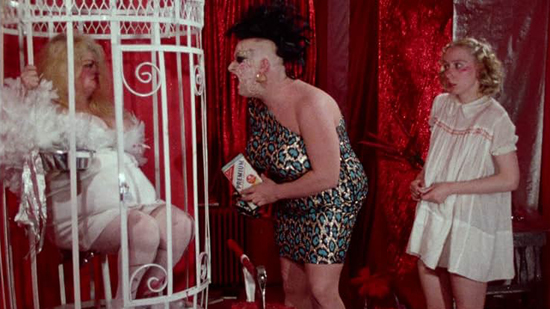
THE POPE OF TRASH
Waters has self-described himself as the “Pope of Trash” and it’s an apt moniker. His movies very much push against the Hollywood standards of beauty, and he seems to really relish the uglier side of society. He’s very much attracted to characters that exist in worlds of extremes, where there is nothing beneath them with regards to sexuality, beauty, or good manners. In many ways, Waters emerged as a filmmaker at a very good time within the film industry, as his button pushing weirdo surrealism fit well with the counter-culture pushback that was happening in both Hollywood and the culture at large. Waters managed to find his audience through the film goers that were looking for anti-establishment statements made on the big screen, and John Waters was delivering on that front. The abrasiveness of movies like Pink Flamingos and Female Trouble were unlike anything else that people had seen before, and they certainly weren’t for everyone, even in the Grindhouse cinema scene. Part of the uniqueness of John Waters’ worlds on the big screen was due to the miniscule budgets that his film’s had, but that was something that he embraced as a filmmaker as well. His movies took place in what can only be described as filth, with rundown trailer parks and seedy bedrooms being common locations. And the people who lived in them were as nasty as what you’d expect the odors of these places to be like. The entire plot of Pink Flamingos involves the characters fighting over who is the “Filthiest Person Alive,” which Divine wins hands down with a stunt involving a dog that is best not described any further. Even as John Waters toned down his “Pope of Trash” status in his more mainstream films, there still was a bit of grunge found in his worlds, such as the state of the Turnblad home in Hairspray. There certainly has not been a filmmaker that has earned more X or NC-17 ratings in his career outside of porn, and Waters seems to wear that distinction as a badge of honor. Most filmmakers would not have made it far after making a movie like Pink Flamingos, and Waters just happened to luck into being the right man at the right time.
2.
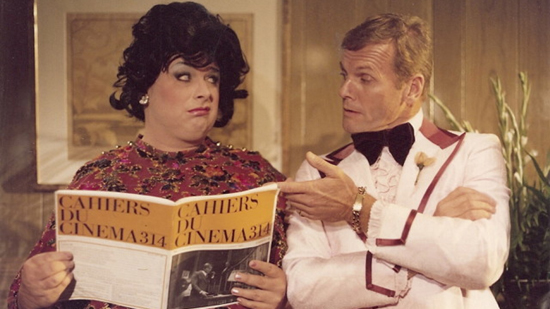
NOSTALGIC CAMP
Even as there was an intention to embrace the ugliness of his films early on, John Waters still wanted to emulate the kinds of films that he was reared up with. In particular, you can really feel the influence of the movies of Douglas Sirk in his body of work. Sirk’s melodramas of the 1950’s, including Written on the Wind (1956) and Imitation of Life (1959) had a heightened cinematic flavor to them with their bold color palettes and melodramatic performances. In time, these kinds of movies would fall into parody as Hollywood changed, but to people like John Waters, these movie were still a thing of beauty. The idea of camp arose out of this love for outdated artistic styles. For John Waters, he wanted his movies to be camp by design, with his actors intentionally performing like they were in a soap opera, and having this be the driver of the humor in his films. This is something that very much defines Waters’ first mainstream film, Polyester (1981), which is an obvious parody of the Douglas Sirk style. Polyester plays exactly like a soap opera movie of the 1950’s, but the big difference is that Divine is filling the leading female role. The film then becomes a critique of the stringent conservative values of that time period with the Divine upending the role of the idealized woman at the center of the story, but at the same time Waters is indulging in the camp value of the cultural hallmarks of that era. He even tried to bring back a failed gimmick of that time period called Odorama with some screenings, though I believe the smells he chose were not the same kind of pleasant ones that would’ve been used back in the 50’s. While he was still pushing buttons, you can definitely tell he still had a soft spot for the campy relics of the past, whether it was the wild fashion styles or the music of the early days of rock and roll. Hairspray goes even further in being a celebration of both, with the girls all dressed in their poodle skirts and sporting beehive hairdos. Waters may have broken new ground, but there was still a sense of looking back and celebrating the past as well, especially if it was something that didn’t fully get the love it deserved the first time around.
3.
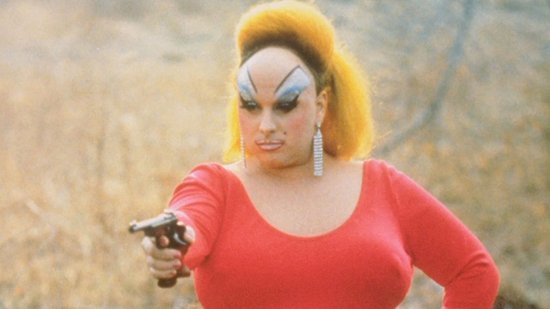
DIVINE
Nothing, or in this case no one, had more of an impact in shaping John Waters into the filmmaker that he is today than his longtime muse Divine. Starting off as childhood friends, they both emerged as artistic soul mates with Waters determined to turn his flamboyant partner into a movie star. It’s easy to see why John Waters was drawn to Divine as a performer; she was a character that easily fit into the filthy worlds that Waters imagined and would stand out as a queen within. Glenn Milstead just had a knack for commanding the screen as the character Divine, and even after doing some shocking things on camera for Waters’ movies, it only increased his level of popularity. Divine remained a staple of the drag queen cultural scene, and in total she would appear in a total of six films for director Waters. Pink Flamingos of course is widely seen as the movie that put her on the map, with the gun totting, red dress wearing image of her being a particularly iconic. But, she probably reached the pinnacle of her popularity with her role as Edna Turnblad in Hairspray. The great thing about roles like Edna Turnblad for a performer like Divine is that they are not written for her as drag or transgender role. These were female characters that could have been played by any woman, but were intended solely for Divine alone. Though Glenn/Divine was not trans himself (identifying as a gay cisgender man his whole life) he nevertheless broke a lot of barriers for performers in the trans community by playing these female roles and doing so without pretense of them being a role for a drag performer. Sadly, Divine’s time on the big screen was short lived as Glenn Milstead passed away from heart failure at the too young of age of 42 in 1988; only three weeks after the premiere of Hairspray. John Waters would try to fill the void left by his muse and friend in his later films by centering his movies around larger than life female figures, but none would have the same impact as what Divine brought to his films. Divine may have been the most unconventional leading lady in cinema history, but the fact that she managed to make it to the big screen at all in her own way is pretty historic in of itself.
4.
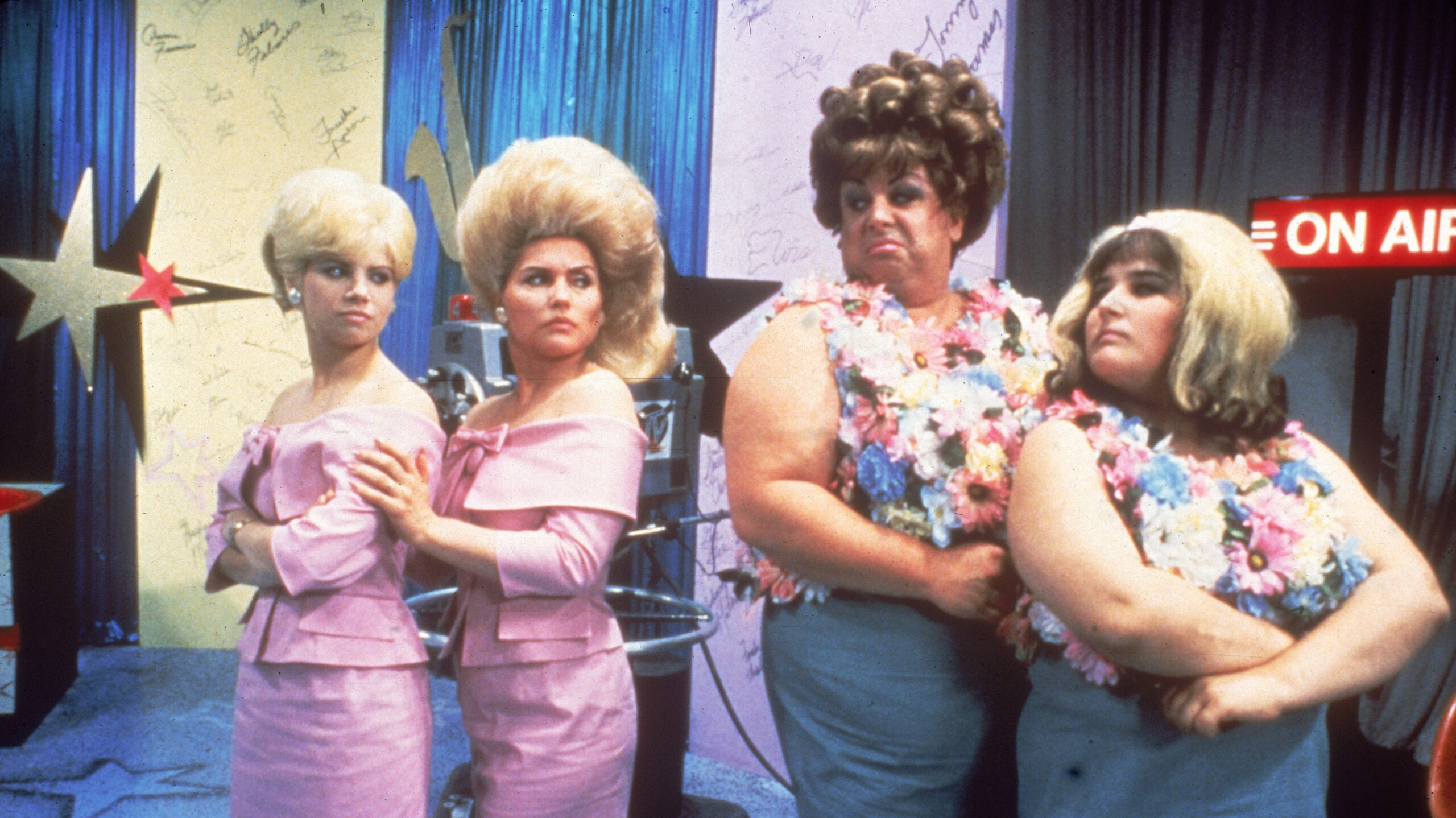
CELEBRATING THE NON-CONFORMISTS
If there is a common thread in all of John Waters movies, it’s the celebration of people who refuse to conform to societal standards. The non-conformist is the purest kind of hero in Waters’ movies; something that was especially true in his earlier films with Divine. Waters celebrates the trashy, the over-weight, and the socially oppressed in his movies, and much of the fun of his films is in seeing how his characters rise above prejudice to be their authentic selves and be celebrated for that. Perhaps the truest expression of this trope in a Waters movie can be found in the movie Hairspray. The film centers around a fat girl named Tracy Turnblad (played by a young Ricki Lake) who wants to be a dancer on her favorite show. While she breaks down the unforgiving beauty standards of the 1950’s in order to give herself a fair shot at achieving her dream, she also inspires others around her to do the same, especially the local Baltimore African-American community that has been trying to de-segregate their place on television as well. This parable about tolerance and racial justice still fits very well within John Waters’ style of storytelling, because his whole career has been pushing back against the “norms” and celebrating the things that make us all different. Hairspray may be a silly, oddball comedy with unconventional leading ladies, but it’s a crowd pleaser in the way that it has an easily relatable underdog story to tell. And throughout Waters’ career after, with movies like Cry-Baby, Pecker (1998), and A Dirty Shame (2004), the non-conformist is always the ideal hero he celebrates, even if they remain a bit too extreme for people. And it is through the propping up of these kinds of heroes that his movies may have even inspired many more outsiders to speak up for themselves and stand up for their rights, especially within the same LGBTQ community that he represents. Thanks to his ability to portray his band of outsiders with a strong sense of personal dignity, we have seen more and more people have the courage to define who they are and not be just what society tells them to be.
5.

SHOCKING SUBURBIA
To coincide with lifting up of voices of the non-conformists, John Waters’ movies also take aim at shocking the system of the breeding ground of oppressive conformity; American Suburbia. While Waters celebrates the kitsch of of a bygone era of American society, he certainly has no love for the values; especially the kind that suppresses one sexual identity. While Waters does poke fun at the sexual repression of mid-century America in many of his movies, especially in Polyester, some of his movies also take things to violent ends as well. The movie Serial Mom features Kathleen Turner playing a unassuming traditional housewife who we learn over the course of the movie is a secret serial killer. And it’s meant to be a dark comedy, with the deaths played up for laughs. With this, Waters is dissecting the notion of traditional marital standards that were pushed upon Americans in the post-War era, and shows that the quaint life of Suburbia hides dark secrets just under the surface. John Waters always showed a level of violence that existed on the fringes of society, like he did in his early movies with Divine, but his later movie would show us that violence is present in just about every part of society, and that the people on the fringes are just more honest about it. Waters certainly likes to use violence and sexual awakenings as tools to break down facades that society puts up around itself to make things seem more civil than they really are. At the same time, he’s not a nihilist either. Violence is more of a system shocker in his movies used to expose the hypocrisies that society is built upon. You see this too with his critique of Hollywood in Cecil B. Demented (2000), a movie about terrorist filmmakers. It fits within his desire to celebrate the non-conformity of society with the knocking down of the falsehoods that we perpetuate to create some sense of “civil society.” Waters recognizes that there is a little bit of a freak in all of us, and that this is something that should freely be out in the open.
So while most of John Waters films may not per say be about LGBTQ issues exactly, there is little doubt that he is one of the most influential voices in Queer Cinema. I think that the reason why so many queer themed films made over the years have a retro aesthetic to them is primarily because of his own influence, with his celebration of retro kitsch and campy cinematic tropes. There are many queer filmmakers today who emulate the Waters’ style, with recent examples like Dicks: The Musical (2023) and The People’s Joker (2024) taking a page from the Waters School of Camp. It’s also interesting to see the legacy that John Waters’ movies have had on cinema in general, especially in surprising places. I don’t think anyone would’ve expected a Disney animated musical to be the place that pays homage to a John Waters film, but there is one very prominent one in the 1989 classic The Little Mermaid. The late and beloved lyricist Howard Ashman came from the same Baltimore Avant Garde arts scene as John Waters and Divine, and he specifically used Divine as the inspiration for the villainous sea witch Ursula. The Disney animators went a step further, and gave Ursula a spiky hair style similar to the iconic one Divine was wearing in Female Trouble. And there of course was the hit Broadway musical based on Hairspray which in turn was adapted into a new musical film which Waters didn’t direct himself but still participated in, cameoing as a flasher of course. Unfortunately, Waters hasn’t had as much luck getting financing for his films as he once did before and he has directed a new film in over 20 years; the last being A Dirty Shame. Still, he maintains an active public profile and has been heralded as a crucial pioneer in queer cinematic history. Perhaps the proudest he can be as a filmmaker is seeing that his body of work made a difference, both in shaking up the film industry as well as elevating new voice within the business. And he did it without having to sacrifice his artistic integrity. Instead, he went mainstream on his terms, making movies that he wanted to make that could also reach the mainstream target audience. He still wants to continue making movies, and hopefully Hollywood grants him at least one more chance to step behind the camera once again. As we celebrate another Pride Month, we definitely need to recognize just how important someone like John Waters was in getting us to the point where we could express that pride openly. And if he had to do that in some shocking and often grotesque ways, well, thank goodness he did so without shame and with a whole lot of courage; and some sick, twisted ideas as well.